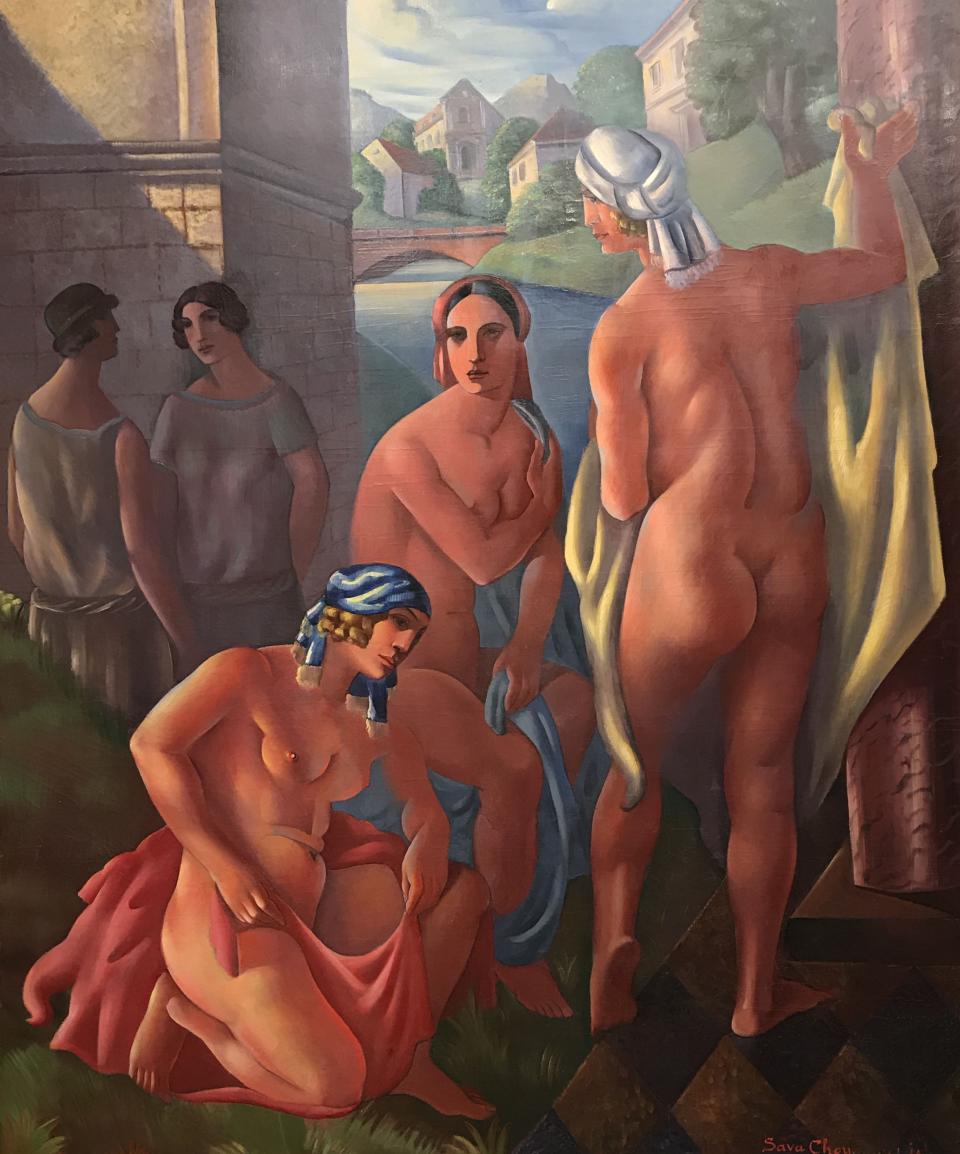About the Artist
Paul Cézanne
Born: Aix-en-Provence, 19 January 1839
Died: Aix-en-Provence, 23 October 1906
Nationality: French
Collection
Philadelphia Museum of Art
Documentation
Tamar Garb examines Cézanne’s Large Bathers from a sensory and psychological viewpoint:
“Cézanne’s art was tied to a new mode of looking, one which was embedded in the late nineteenth-century obsession with an art of sensation, an art adequate to the processes of vision, an art which could subsume the integrity of the objects it represented into the screen of sensation that was constructed as the modern mode of vision. Whether imagined or observed, the bathers in the landscape, no less than the landscapes themselves, had to signify that transformation of sight into touch, of vision into matter which was the hallmark of a modernist practice. In the process of the obsessive tracking of sensation, bodily difference was sacrificed. The distortions, grotesqueries and ambiguities pictured in the late bather paintings are the by-product of this process. They are not necessarily intentional or deliberate. It was the intensity of engagement at the level of the visual which produced the ambiguities at the level of the sexual. Or, alternatively, it was the strategies of containment at the level of the sexual which produced a disruption at the level of the visual. Visuality and sexuality are here inextricably intertwined. But the resultant transgressive androgyny of the bodies depicted, with such fragile balance, is produced within the conventional framework of structures and pictorial rhythms of the images as in the bodies represented. It is in the tension set up between these that the interest of these works lies. For it is in the interaction of figure and ground, of body and surface, that the very modernity of these images can be found. But that modernity is located as much in the anxiety that they parade as in the formal transgressions they represent.”
Tamar Garb, “Cézanne’s Late Bathers: Modernism and Sexual Difference,” Bodies of Modernity. Figure and Flesh in Fin-de-Siècle France (London: Thames and Hudson, 1998), 218.
Mary Louise Krumrine comments on earlier scholarship regarding Cézanne’s Large Bathers :
“In the monumental Grandes baigneuses, now in Philadelphia, [Meyer] Shapiro recognized that Cézanne was searching for a ‘constraining form, an over-determined order which has to do with [his] anxiety about women. The triangle [for Cézanne] is a form of constraint.’ None of these writers refers to [Roger] Fry’s earlier awareness of similar characteristics.”
Mary Louise Krumrine, “Cézanne’s ‘Restricted Power’: Further Reflections on the Bathers,” The Burlington Magazine, vol. 134, no. 1074 (September 1992): 589.
Related works:
Bathers, 1875 (Metropolitan Museum of Art, New York)
Three Bathers, c. 1880 (Petit Palais, Paris)
Male Bathers, c. 1890 (Musée d’Orsay, Paris)
Les Grandes Baigneuses, begun 1895 (Barnes Foundation, Merion, PA)
Similar subject by other artists:
Karl Blechen, Bathers in the Park at Terni, 1833
Gustave Courbet, Bathers, 1858 (Musée d'Orsay, Paris)
Pierre-Auguste Renoir, The Large Bathers, 1887 (Philadelphia Museum of Art)
Paul Sérusier, Bathers in Whilte Clothes, 1908 (Musée d'Orsay)
Ernst Ludwig Kirchner, Bathers at Moritzburg, 1909-26 (Tate, London)
